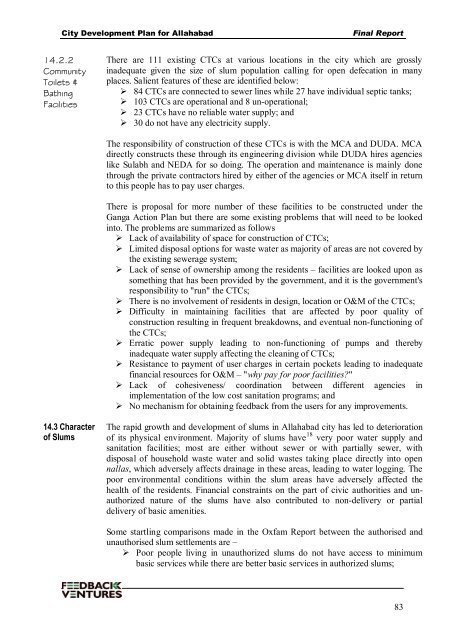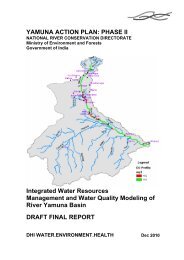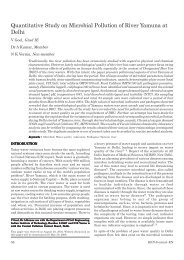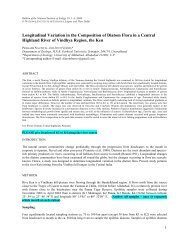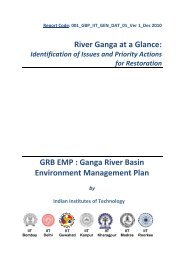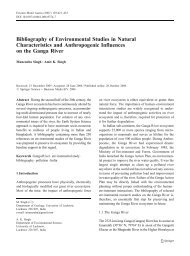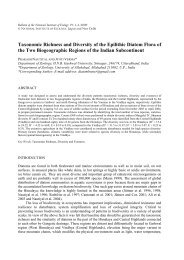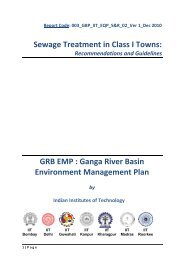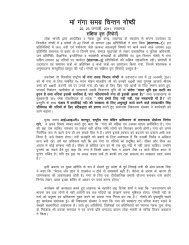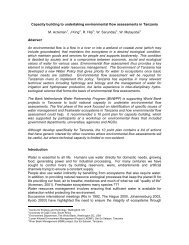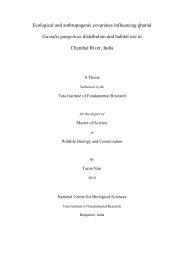Contents - GANGAPEDIA
Contents - GANGAPEDIA
Contents - GANGAPEDIA
Create successful ePaper yourself
Turn your PDF publications into a flip-book with our unique Google optimized e-Paper software.
City Development Plan for Allahabad Final Report<br />
14.2.2<br />
Community<br />
Toilets &<br />
Bathing<br />
Facilities<br />
14.3 Character<br />
of Slums<br />
There are 111 existing CTCs at various locations in the city which are grossly<br />
inadequate given the size of slum population calling for open defecation in many<br />
places. Salient features of these are identified below:<br />
84 CTCs are connected to sewer lines while 27 have individual septic tanks;<br />
103 CTCs are operational and 8 un-operational;<br />
23 CTCs have no reliable water supply; and<br />
30 do not have any electricity supply.<br />
The responsibility of construction of these CTCs is with the MCA and DUDA. MCA<br />
directly constructs these through its engineering division while DUDA hires agencies<br />
like Sulabh and NEDA for so doing. The operation and maintenance is mainly done<br />
through the private contractors hired by either of the agencies or MCA itself in return<br />
to this people has to pay user charges.<br />
There is proposal for more number of these facilities to be constructed under the<br />
Ganga Action Plan but there are some existing problems that will need to be looked<br />
into. The problems are summarized as follows<br />
Lack of availability of space for construction of CTCs;<br />
Limited disposal options for waste water as majority of areas are not covered by<br />
the existing sewerage system;<br />
Lack of sense of ownership among the residents – facilities are looked upon as<br />
something that has been provided by the government, and it is the government's<br />
responsibility to "run" the CTCs;<br />
There is no involvement of residents in design, location or O&M of the CTCs;<br />
Difficulty in maintaining facilities that are affected by poor quality of<br />
construction resulting in frequent breakdowns, and eventual non-functioning of<br />
the CTCs;<br />
Erratic power supply leading to non-functioning of pumps and thereby<br />
inadequate water supply affecting the cleaning of CTCs;<br />
Resistance to payment of user charges in certain pockets leading to inadequate<br />
financial resources for O&M – "why pay for poor facilities?"<br />
Lack of cohesiveness/ coordination between different agencies in<br />
implementation of the low cost sanitation programs; and<br />
No mechanism for obtaining feedback from the users for any improvements.<br />
The rapid growth and development of slums in Allahabad city has led to deterioration<br />
of its physical environment. Majority of slums have 18 very poor water supply and<br />
sanitation facilities; most are either without sewer or with partially sewer, with<br />
disposal of household waste water and solid wastes taking place directly into open<br />
nallas, which adversely affects drainage in these areas, leading to water logging. The<br />
poor environmental conditions within the slum areas have adversely affected the<br />
health of the residents. Financial constraints on the part of civic authorities and unauthorized<br />
nature of the slums have also contributed to non-delivery or partial<br />
delivery of basic amenities.<br />
Some startling comparisons made in the Oxfam Report between the authorised and<br />
unauthorised slum settlements are –<br />
Poor people living in unauthorized slums do not have access to minimum<br />
basic services while there are better basic services in authorized slums;<br />
83


